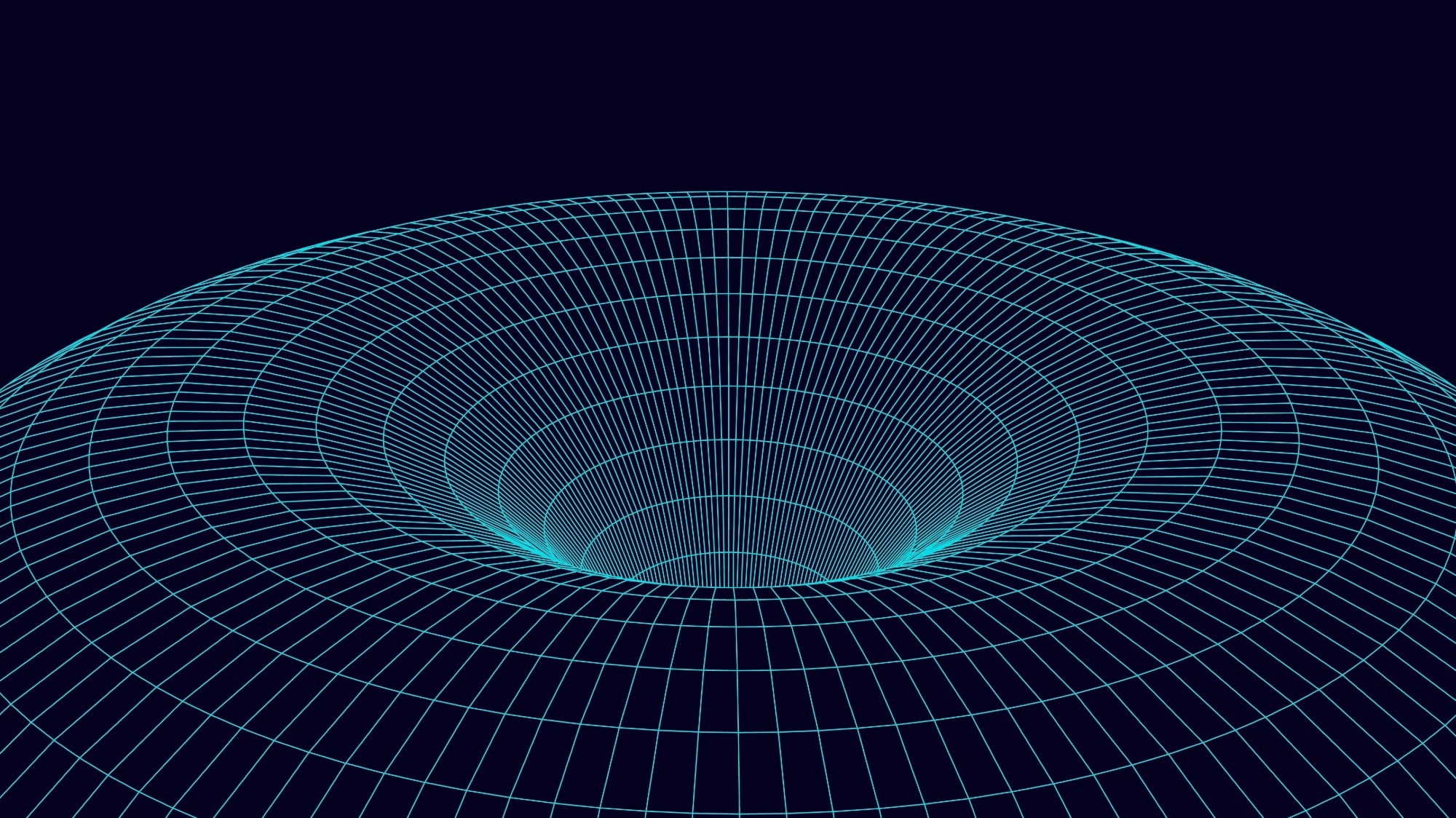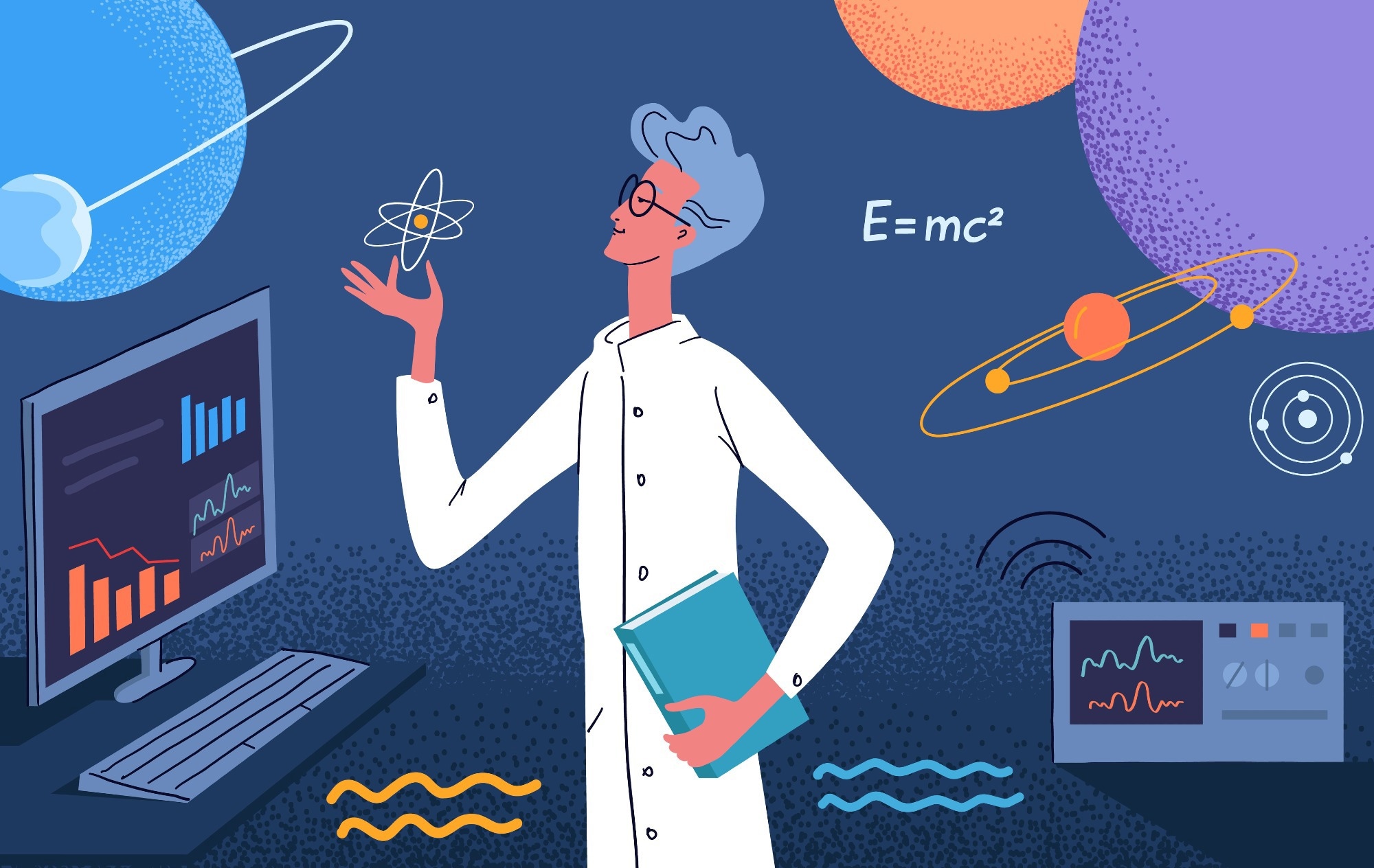A global team of scientists has identified the upper bounds on the atomic transitions that violate the Pauli exclusion principle (PEP). The experiment was carried out to search for PEP violations in atomic transitions in lead with high sensitivity with the VIP-2 lead experiment. The objective of the experiment was to find the strongest bounds on noncommutative quantum gravity models. Details of the study are published in the journal Physical Review Letters.

Image Credit: Irvin 2809/Shutterstock.com
Despite being the least understood force, gravity was the first that was identified by scientists. While the effects of gravity can be approximated with high accuracy on large objects like footballs, cranes, stars, and galaxies, a viable description of how the force of gravity interacts at the quantum level has remained elusive.
Quantum Gravity
The obvious expectation that one set of gravitational laws should apply to all matter has propelled the nearly century-long search for a theory of quantum gravity. This theory would explain how the gravitational force operates for the universe's tiniest particles, but also should be applicable to matter of all sizes, ranging from galaxies to quarks.
A conflict between the two biggest accomplishments in theoretical physics is at the center of its most challenging issue. Isaac Newton's idea of simple attraction between objects was supplanted by Albert Einstein's theory of general relativity. General relativity describes matter or energy as bending space and time around it while adjacent objects follow those curved pathways, acting as though they were drawn to one another.
While general relativity has withstood all the scientific observations thus far, most scientists believe that Einstein's theory will eventually run into inconsistencies at the quantum level. In reality, planets and stars are composed of atoms, which themselves are composed of electrons and quarks. The exchange of fundamental particles is theorized to be the foundation of forces of attraction and repulsion.
The examination of potential Pauli exclusion principle (PEP) violations serves as a crucial evaluation of the microscopic space-time structure and features.
Pauli Exclusion Principle (PEP)
The Pauli exclusion principle states that no two electrons can have the same set of quantum numbers. Quantum numbers are mathematical constructs from quantum mechanics. Three quantum numbers emerge from the spatial geometry of the solution to the Schrodinger equation for the hydrogen atom, and a fourth quantum number emerges from electron spin. As a result, the quantum numbers place restrictions on the number of electrons that can occupy a given state, leading to the theory formulated by Pauli.
PEP is one of the major theories of contemporary science, this straightforward but beautiful theory explains processes in particle and nuclear physics, astronomy, and biology.
According to W. Pauli's proof, PEP is a direct result of the spin-statistics theorem (SST) and comes from fermionic spinor fields' non-commutation laws - In mathematical physics, noncommutative quantum field theory is an application of noncommutative mathematics to the space-time of quantum field theory. Many quantum gravity frameworks, which are referred to by the authors as non-commutative quantum gravity models (NCQG), share the property of space-time noncommutativity.

Image Credit: HilaryDesign/Shutterstock.com
One of the novel features of noncommutative field theories is the UV/IR mixing phenomenon. In UV/IR mixing, the physics at high energies affects the physics at low energies except in quantum field theories in which the coordinates commute.
The Lorentz invariance, which closely links PEP to the space-time symmetry and structure, is a key tenet of SST. At very high energies, Lorentz symmetry may be dynamically violated without a fundamental breakdown of the symmetry.
Searching for Violations of PEP
Several methods are used in the experimental search for potential PEP violations. A key test depends on whether the superselection rule proposed by Messiah and Greenberg (MG) is satisfied or not. According to MG, the transition probability between any two alternative symmetry states is zero in any given closed system of identical fermions.
The strongest constraints are provided in this context by the VIP-2 lead experiment, which looks for lead atomic transitions that violate the Pauli exclusion principle.
The VIP2 Experiment
The VIP2 experiment (Violation of the Pauli Principle) examines potential violations of the Pauli exclusion principle for electrons in atomic physics. The experiment is situated in Italy's LNGS-INFN Gran Sasso underground laboratory, close to the town of L'Aquila. It is managed by a global group of researchers.
A high-purity coaxial p-type germanium detector weighing roughly 2 kg serves as the foundation of the experimental apparatus. A target with a total mass of around 22 kg that is made up of three 5 cm thick cylindrical pieces of radio-pure Roman lead surrounds the detector.
The scientists describe the outcomes of a Bayesian analysis that was conducted to determine the probability distribution function (PDF) of the anticipated number of photons released in PEP-violating transitions. Detailed information of their analysis is provided in the recent publication. A limit on the model's scale is provided by comparing the experimental upper bound on the expected value of signal counts with the theoretically predicted value.
Catalina Curceanu, a co-author of the paper, states:
In our paper we reported an investigation of (some versions of) Quantum Gravity models which are predicting an energy-dependent Pauli Exclusion Principle (PEP) violation, meaning, of course, physics beyond the Standard Model. We set strong limits on PEP violation, and we excluded the theta-Poincare' model, one of the most commonly adopted Non-Commutative Quantum Gravity models, for non-vanishing electric-like components of the theta tensor. The case in which the components of the tensor are taken to be zero was excluded up to almost one-tenth of the Planck scale.
Catalina Curceanu, Co-Author, Istituto Nazionale di Fisica Nucleare
'Realizations of String Theory that allow to recover the Standard Model of particle physics fall in this class of universality' she continued.
Remarks and Outlook
As described above, by using a Bayesian comparison of the measured spectrum with the violating NCQG model, upper bounds are placed on the expected signal of PEP-violating transitions produced in a high radio-purity Roman lead target.
The analysis provides the strongest experimental test based on atomic transitions. The proposed model produced tight bounds on the noncommutativity energy scale that exclude -Poincare up to 2.6 102 Planck scales when the "electric-like" components of the v tensor are different from zero, and up to 6.9 10-2 Planck scales if they vanish.
A thorough examination of data from current and upcoming studies, with an emphasis on the signatures of atomic PEP violation, will significantly bolster the findings.
An observation of the violation of the Pauli Exclusion Principle would have, of course, ground-breaking consequences for the quantum gravity models; but also setting very strong limits is already providing a quantitatively very significant insight into the plethora of quantum gravity models that can be found in the literature. The very same constraints on the Pauli Exclusion Principle violations are indeed extremely effective in limiting several models of quantum gravity that predict violations/modifications of the quantum statistics.
What it is extremely relevant here, is the fact that we arrived, by running such high-precision experiments as we did, to test quantum gravity (and other theories beyond Standard Model) with such a high precision impossible to do at present day accelerators in direct experiments. This is a big leap both from theoretical and experimental points of view!
Catalina Curceanu, Co-Author, Istituto Nazionale di Fisica Nucleare
References
Piscicchia, K., Addazi, A., Marcianò, A. et al Strongest Atomic Physics Bounds on Noncommutative Quantum Gravity Models. Phys. Rev. Lett. 129, 131301 : 10.1103/PhysRevLett.129.131301
Marton, J. Bartalucci, S. Bassi, A. et al Underground test of quantum mechanics - the VIP2 experiment. arXiv:1703.10055v2 [quant-ph] https://doi.org/10.48550/arXiv.1703.10055
Disclaimer: The views expressed here are those of the author expressed in their private capacity and do not necessarily represent the views of AZoM.com Limited T/A AZoNetwork the owner and operator of this website. This disclaimer forms part of the Terms and conditions of use of this website.